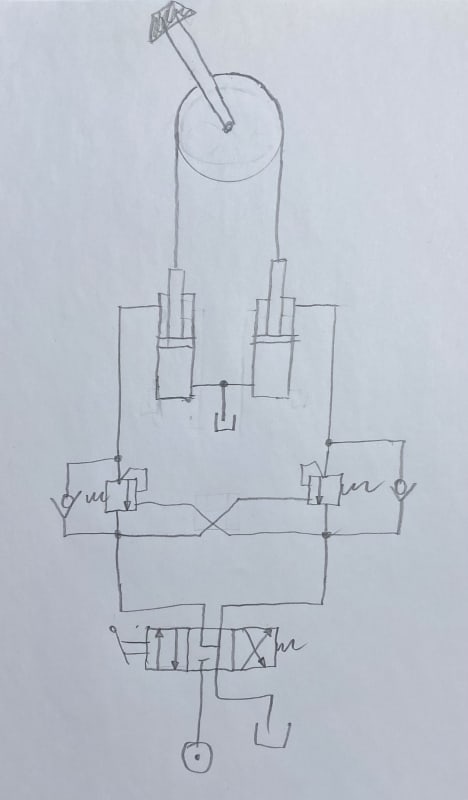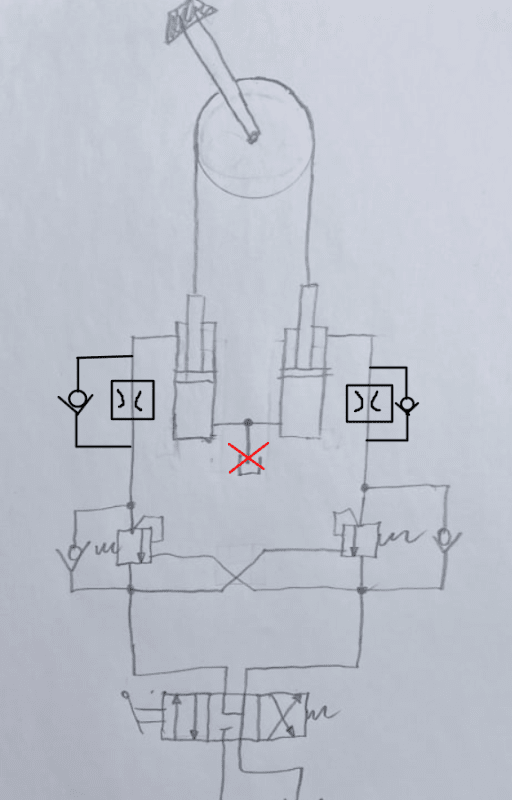bertfourie
Mechanical
I need to rotate a load suspended on a shaft. I would like to do so via a chain over a sprocket to turn the shaft. Due to space restraint, I would like to use a cylinder(s) to move the chain and translate linear motion into rotation. I considered a through rod cylinder to be able to rotate in both directions, but I am limited to rod length space. I had this possibly crazy idea of using one cylinder on either end of the chain - I only need 180-degree rotation of the sprocket, and connecting the cylinders in series so they are synchronized. I am mindful that hydraulic cylinder seals are not perfect, also that the cfg of the load could cause a flip-over in push-pull demand on the sprocket. I was thinking these issues could be overcome by fitting counterbalance valves on the in and out ports of the series connected pair, and every time bottoming out full stroke. I am concerned that if the cylinders are not perfectly synchronized chain jump could occur, so I was thinking of fitting a chain guard around the sprocket so the chain could never jump off - at worst it would jam.
Is this a crazy idea, stay away? Has anybody done this before, successfully? All comments are welcome.
Is this a crazy idea, stay away? Has anybody done this before, successfully? All comments are welcome.


